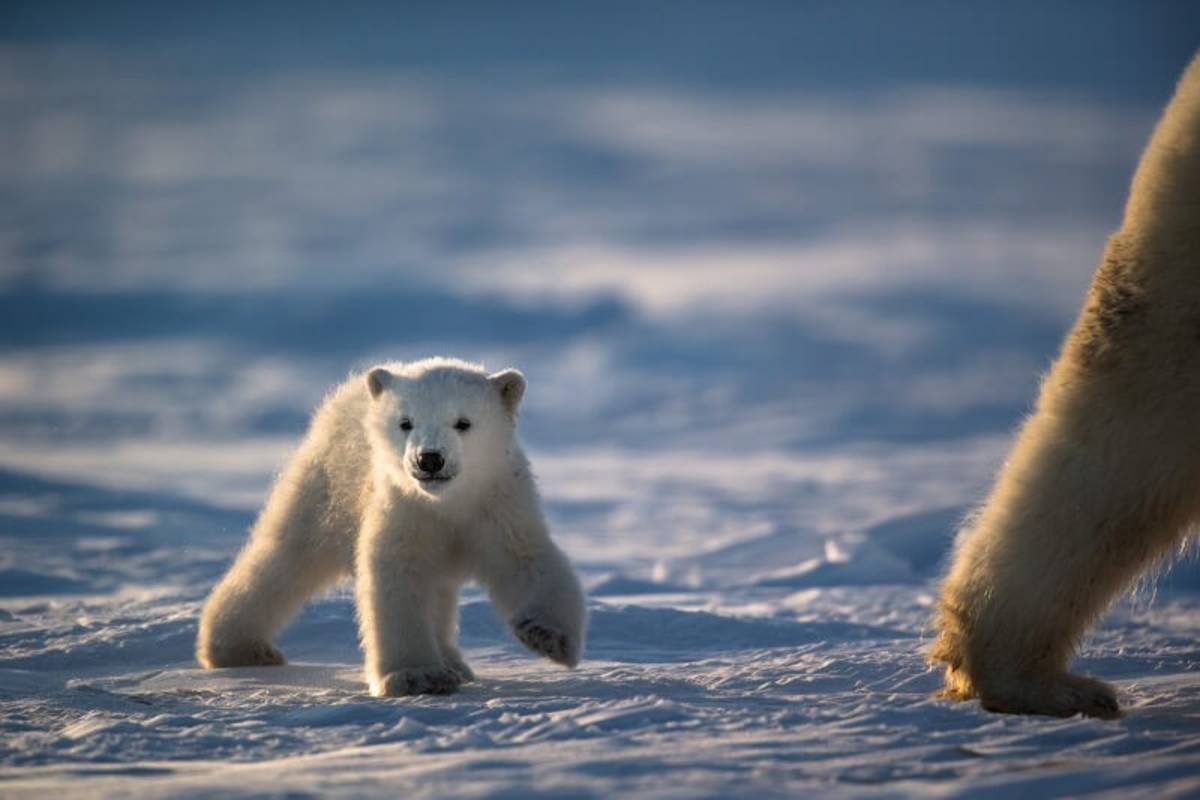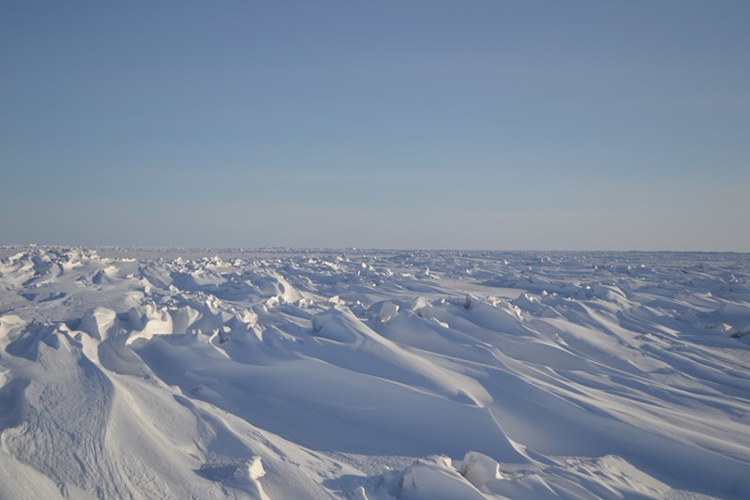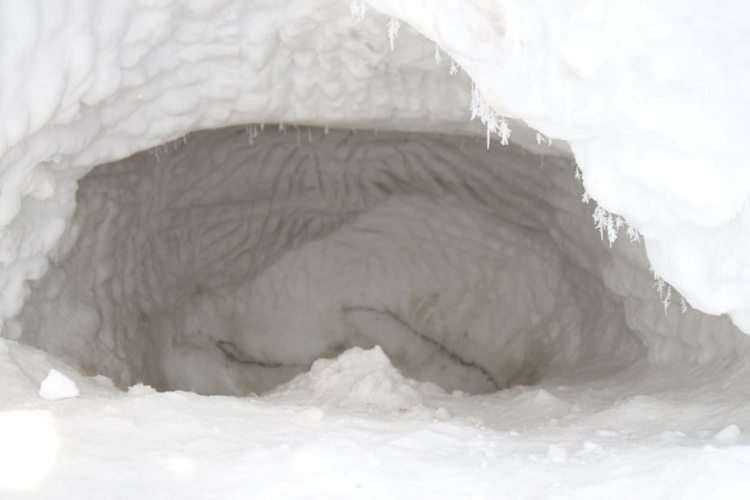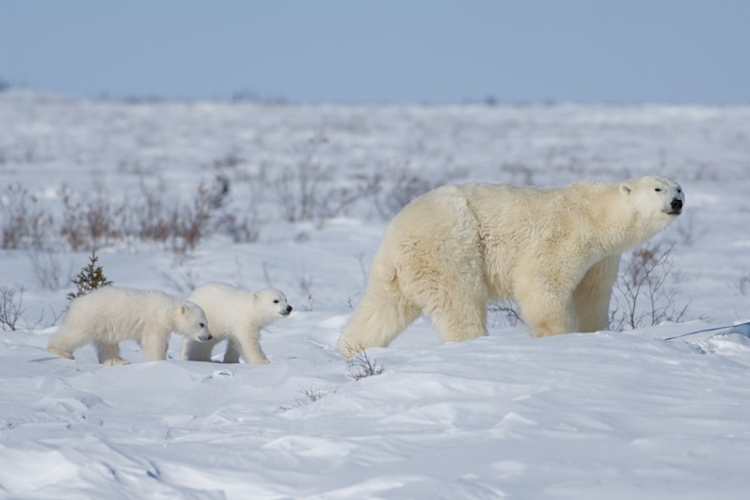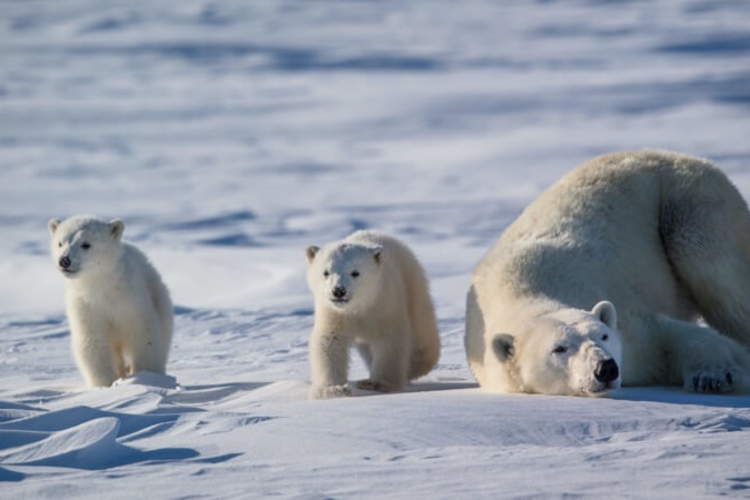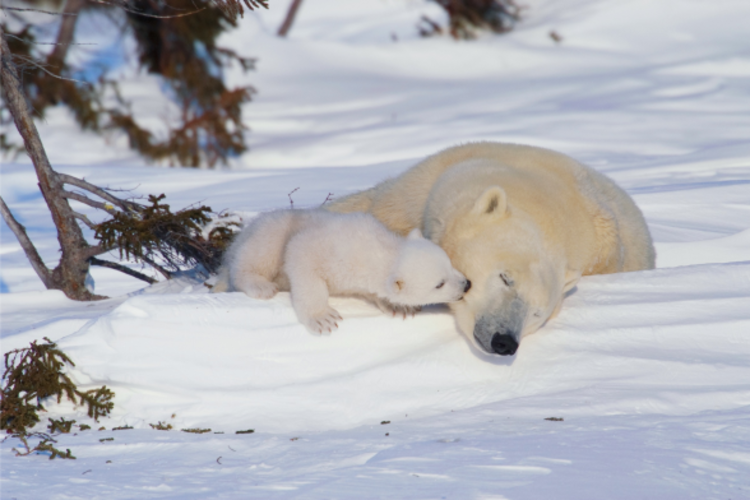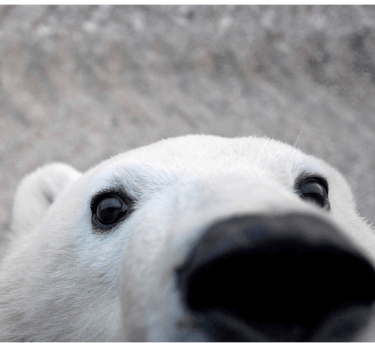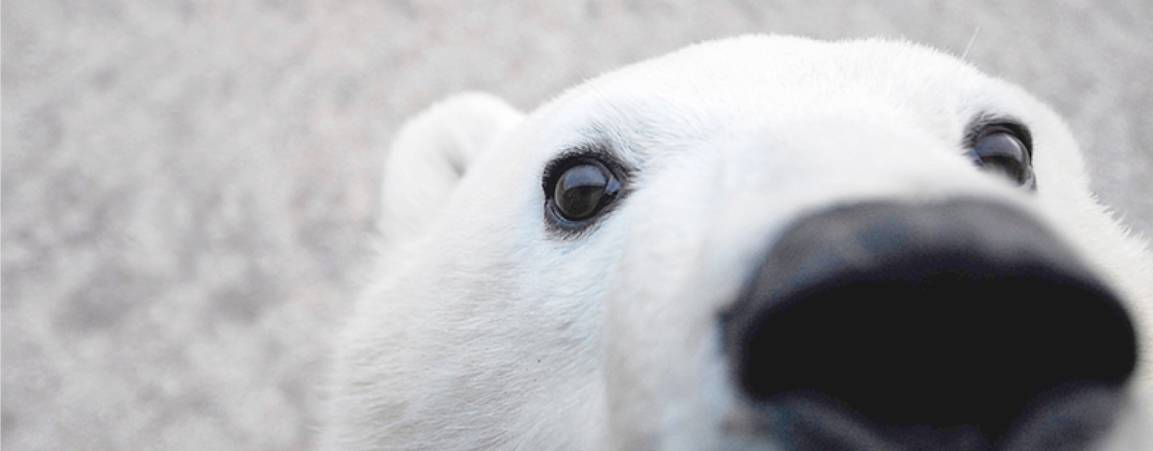Every autumn, as the days shorten and temperatures drop, pregnant female polar bears throughout the Arctic begin migrating to den locations to give birth to their cubs. While some give birth in snow dens on the sea ice, the majority den onshore, where they dig into snow drifts (or sometimes peat moss or earth along river banks) to build shelters. Some are experienced, having denned numerous times, while others partake in this activity for the first time. It’s not something they’ve ever seen or learned from their mothers; the instructions are written entirely into their DNA. This is the midway point in the reproductive cycle for a pregnant female polar bear.
The journey begins in spring when females pair off with mates for courtships lasting up to two weeks. For the next six months, the fertilized eggs are maintained in the female but prevented from growing. Only in the case of a healthy female with a high level of fat reserves will the eggs implant in the womb to begin developing into cubs, a process called delayed implantation. This is the point at which pregnant females begin to build their maternity dens.
